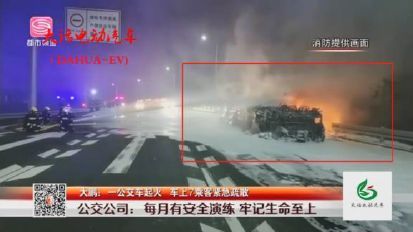Are LFP batteries really safer than high-nickel batteries?
By Kim Byung-wookPublished : March 28, 2021 - 16:30

Public distrust is running high over the safety of high-nickel lithium-ion batteries after a series of electric vehicle recalls by renowned automakers including Volkswagen, BMW, Renault, General Motors, Ford and Hyundai Motor.
Amid growing concerns, lithium iron phosphate batteries -- LFP batteries, which use iron instead of nickel -- have emerged as a safer alternative, though they are less powerful than high-nickel batteries.
But despite the widespread belief that high-nickel batteries are more prone to fire, experts say high nickel ratios are not the direct cause and that LFP batteries have their own safety issues.
Don’t blame nickel
Batteries catch fire when internal temperatures suddenly spike beyond a certain limit. This is called thermal runaway. But nickel is not the origin of thermal runaway.
According to a paper by Chinese researchers titled “Thermal runaway mechanism of lithium-ion battery for electric vehicles: A review,” thermal runaway works like a game of dominoes, and nickel is involved toward the end of the process.
When batteries heat up due to overcharging, for example, anodes, which are made of graphite, react first and start to break down. As the temperature rises, the separators -- made of a thin plastic film coated with a ceramic material -- begin to melt until only the ceramic coating is left. Then the cathodes, which contain metals including nickel, start to break down. Finally, the ceramic wall standing between the anodes and cathodes is compromised, allowing the anodes and cathodes to make contact, which leads to a short circuit and sets the electrolytes on fire.
Simply put, the ratio of nickel is irrelevant as the structural collapse of lithium-ion batteries doesn’t begin with the cathodes, which contain nickel, but with the anodes, which are made of graphite.
“The thermal runaway issue is irrelevant to the ratio of nickel inside cathodes. One of the causes of thermal runaway is dendrites. Dendrites are needle-like crystals created when lithium ions fail to get inside anodes but rather build up on anodes’ surface. These crystals elongate until they penetrate separators. Through these punctures anodes and cathodes make contacts and trigger short circuits and ultimately fires,” said Cho Eun-ae, a professor of materials science and engineering safety at the Korea Advanced Institute of Science and Technology.
“This crystal needle issue also happens inside LFP batteries,” the expert added.
But once a short circuit happens, bigger fires are likely in high-nickel batteries because nickel emits more energy than LFP batteries, said Sun Yang-kook, an energy engineering professor at Hanyang University.
LFP risks
LFP batteries are not exempt from thermal runaway as they share the same structure as lithium-ion batteries. Anodes and cathodes are located on each side with separators in the middle, and both kinds of batteries are filled with a flammable electrolyte solution.
“LFP batteries, as they use liquid electrolytes, always have risks for fires. There used to be a notion that LFP batteries are always safe and do not explode. However, after series of fires reported from EVs powered by LFP batteries, such notion has subsided,” SNE Research analyst Michael Kim said.
The analyst mentioned three electrical vehicle fires in China in which the cars were equipped with LFP batteries.
In one of those cases, a Tang EV from Chinese manufacturer BYD caught fire Dec. 21 when it was parked along a road in Shenzhen. No one was hurt. BYD hasn’t made an official announcement about it.
Official records of EV fires in China are rare and extremely difficult to find, said an official with a South Korean battery firm that has an office in China.
Major LFP battery manufacturers include China’s CATL, BYD, Guoxuan and EVE Energy. All three of Korea’s major battery firms -- LG Energy Solution, Samsung SDI and SK Innovation -- produce only lithium-ion batteries.
Though lithium-ion batteries are more expensive than LFP batteries, they offer greater power, which translates to a longer driving range. According to Hyundai Motor securities, the energy density of LFP batteries is between 170 and 200 watt-hours per kilogram, which is similar to that of NCM batteries containing 50 percent nickel.
LG Energy Solution aims to roll out lithium-ion batteries that contain 90 percent nickel in the second half of this year. In the same period, Samsung SDI plans to introduce lithium-ion batteries that contain 88 percent nickel. SK Innovation is developing lithium-ion batteries that contain 95 percent nickel and is set to mass-produce them in 2023.
By Kim Byung-wook (kbw@heraldcorp.com)












![[Today’s K-pop] BTS pop-up event to come to Seoul](http://res.heraldm.com/phpwas/restmb_idxmake.php?idx=644&simg=/content/image/2024/04/17/20240417050734_0.jpg&u=)




![[KH Explains] Hyundai's full hybrid edge to pay off amid slow transition to pure EVs](http://res.heraldm.com/phpwas/restmb_idxmake.php?idx=652&simg=/content/image/2024/04/18/20240418050645_0.jpg&u=20240418181020)

![[Today’s K-pop] Zico drops snippet of collaboration with Jennie](http://res.heraldm.com/phpwas/restmb_idxmake.php?idx=642&simg=/content/image/2024/04/18/20240418050702_0.jpg&u=)